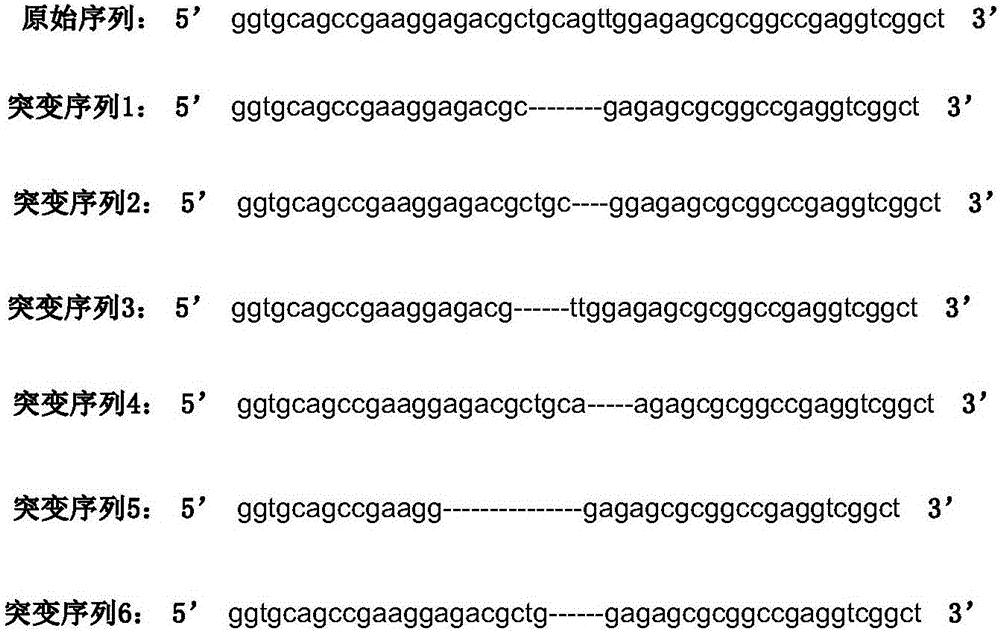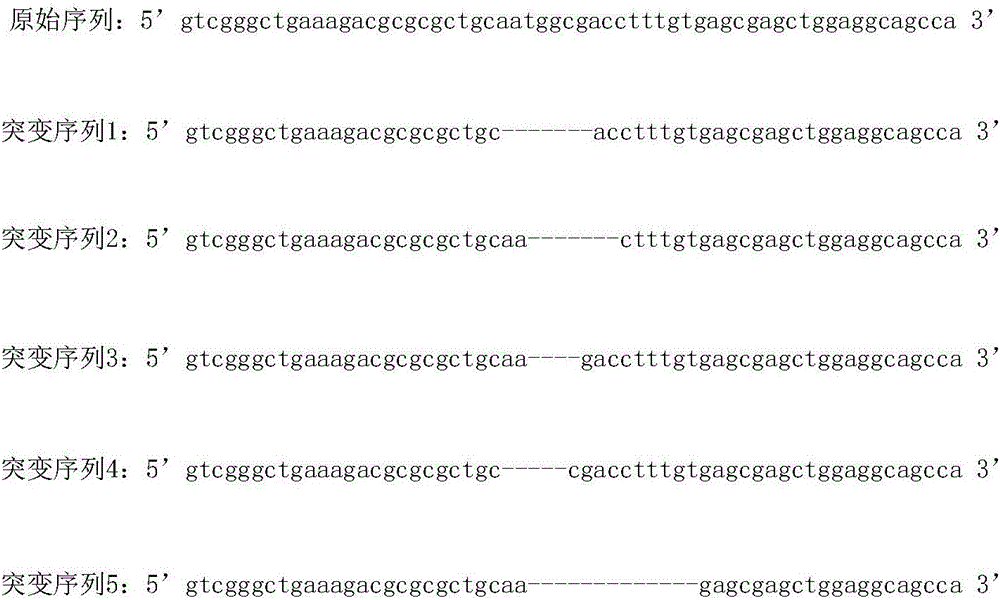Modification method of mammal genome
A technology of mammals and modification methods, applied in biochemical equipment and methods, other methods of inserting foreign genetic materials, microorganisms, etc., to achieve the effect of increasing specificity
- Summary
- Abstract
- Description
- Claims
- Application Information
AI Technical Summary
Problems solved by technology
Method used
Image
Examples
Embodiment 1
[0020] The construction of embodiment 1 plasmid vector pcDNA-DN
[0021] Synthesize the DNA fragment DN (its sequence is shown in SEQ ID NO.1), and clone it into the multiple cloning site of the pcDNA3.1(+) vector (purchased from Invitrogen, product number V79020) by BamHI and EcoRI double enzyme digestion to obtain the plasmid vector pcDNA-DN. Through sequencing verification, it is confirmed that its sequence information is shown in SEQ ID NO.2, and the sequence of the forward sequencing primer pcDNA3.1-F used is shown in SEQ ID NO.3; the sequence of the reverse sequencing primer pcDNA3.1-R is shown in Shown in SEQ ID NO.4.
[0022] pcDNA3.1-F: CTAGAGAACCCACTGCTTAC, pcDNA3.1-R: TAGAAGGCACAGTCGAGG;
Embodiment 2
[0023] Example 2 Verification of the gene modification efficiency of the genome modification method in the human cell line 293T
[0024] Human cell line 293T was purchased from Shanghai Cell Bank, Chinese Academy of Sciences, catalog number: SCSP-502.
[0025] The first exon sequence of human MSH2 gene (its sequence is shown in SEQ ID NO.5):
[0026]
[0027] Select the 120-180bp segment of the above sequence as the target, design and synthesize two DNA oligonucleotides MSH2TF and MSH2TR (the sequence is shown in SEQ ID NO.6-7) for this target, these two oligonucleotides Complementary pairing with the antisense strand of the 131-153bp region of the above sequence and the sense strand of the 161-180bp region (except the last base at the 3' end), respectively, as follows:
[0028] MSH2TF: GGTGGAGCCGAAGGAGACGCTGC C , MSH2TR: AGCCGACCTCGGCCGCGCTC G ;
[0029] MSH2TF, MSH2TR and pcDNA-DN vector were transfected into human cell line 293T according to the ratio of 1:1:5. After...
Embodiment 3
[0031] Example 3 Verification of the gene modification efficiency of the genome modification method in the mouse cell line NIH / 3T3
[0032] The mouse cell line NIH / 3T3 was purchased from the Shanghai Cell Bank of the Chinese Academy of Sciences, catalog number: SCSP-515.
[0033] The first exon sequence (its sequence is shown in SEQ ID NO.10) of mouse Tada1 gene is as follows:
[0034] 1 agagccgagc cgagccgagc cgagcggagc cgagccgagc cgagcggagc cgagccgagc
[0035] 61 cgagccgagc cgaaccgagc cgagccgagc cgaaccgagc cgagccgagc cgagtggaat
[0036] 121 cgagtcgagt cgagcctcca gcgtccggcg cgcaggcctt ccgccgcgtt gatctttcgg
[0037] 181 ttgctggtgg ccgtgggccg cgcggtctac ggtcgggctg aaagacgcgc gctgcaatgg
[0038]241 cgacctttgt gagcgagctg gaggcagcca agaagaactt gagcgaggcg ctgggggaca
[0039] 301acgtgaaaca
[0040] Select the 200-280bp segment of the above sequence as the target of genetic modification, design and synthesize two DNA oligonucleotides Tada1TF and Tada1TR (its sequence is shown in ...
PUM
 Login to View More
Login to View More Abstract
Description
Claims
Application Information
 Login to View More
Login to View More - R&D
- Intellectual Property
- Life Sciences
- Materials
- Tech Scout
- Unparalleled Data Quality
- Higher Quality Content
- 60% Fewer Hallucinations
Browse by: Latest US Patents, China's latest patents, Technical Efficacy Thesaurus, Application Domain, Technology Topic, Popular Technical Reports.
© 2025 PatSnap. All rights reserved.Legal|Privacy policy|Modern Slavery Act Transparency Statement|Sitemap|About US| Contact US: help@patsnap.com



